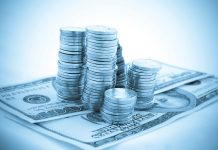Finance Ministry sees public spending and tourism driving GDP growth
Public spending and growth in tourism are the two key factors projected by the Fiscal Policy Office (FPO), an arm of the Finance Ministry, to spur Thailand’s economy during 2016 and lead it to a 3.8 percent growth in overall GDP.
Public spending is projected to be higher for fiscal 2016 (which began on 1 October 2015) than for fiscal 2015, which came in at 3.4 trillion baht. This includes the monies to be spent on state enterprises and local administrations. The current projection predicts public spending will reach 3.7 trillion baht.
Government spending is largely what has been keeping the economy moving along in recent years, and public consumption is expected to rise by three percent this year and government investment will increase by eight percent because of the planned megaprojects such as the double-track rail, roads and water management systems.
The FPO has announced that it expects to see a disbursement rate of 91 percent for fixed expenses and 68 percent for the investment budget within the public expenditure budget.
The government is aimed at spending 82 billion baht in fiscal 2016 on infrastructure project investment, a major increase on the 35 billion baht disbursed in fiscal 2015.
As the FPO notes, the fiscal budget is the most effective tool for driving the economy during times of domestic and global weakness.
The FPO is also buoyed by the prospect of increased tourism into Thailand with expectations of a 15 percent jump in revenues to around 1.65 trillion baht during fiscal 2016.
Notably, Thailand’s 15 major trading partners are starting to gain economic traction again and the Thai baht is sliding against the US dollar, which is seen as a positive for the export market.
In fact, the FPO considers these two factors will help to push Thailand’s exports back into positive territory again for the first time since 2013. Exports slumped in both 2014 and 2015, but the FPO is projecting a 3.2 percent growth for 2016. Those projections were made before the US Federal Reserve raised interest rates for the first time in seven years, in mid-December. In theory, the .25 percent rise in US interest rates should add to the positive effects for the export industry by further weakening the Thai baht. In turn, this could add further impetus to tourism numbers.
The biggest risk factor for the country is the continuing drought, which has serious impacts on the agricultural sector, and water management plans will take time to have their effect. In the meantime, household consumption is likely to be eroded.
The FPO has forecast crude oil to rise to US$57.80 a barrel from its present US$53 level.








